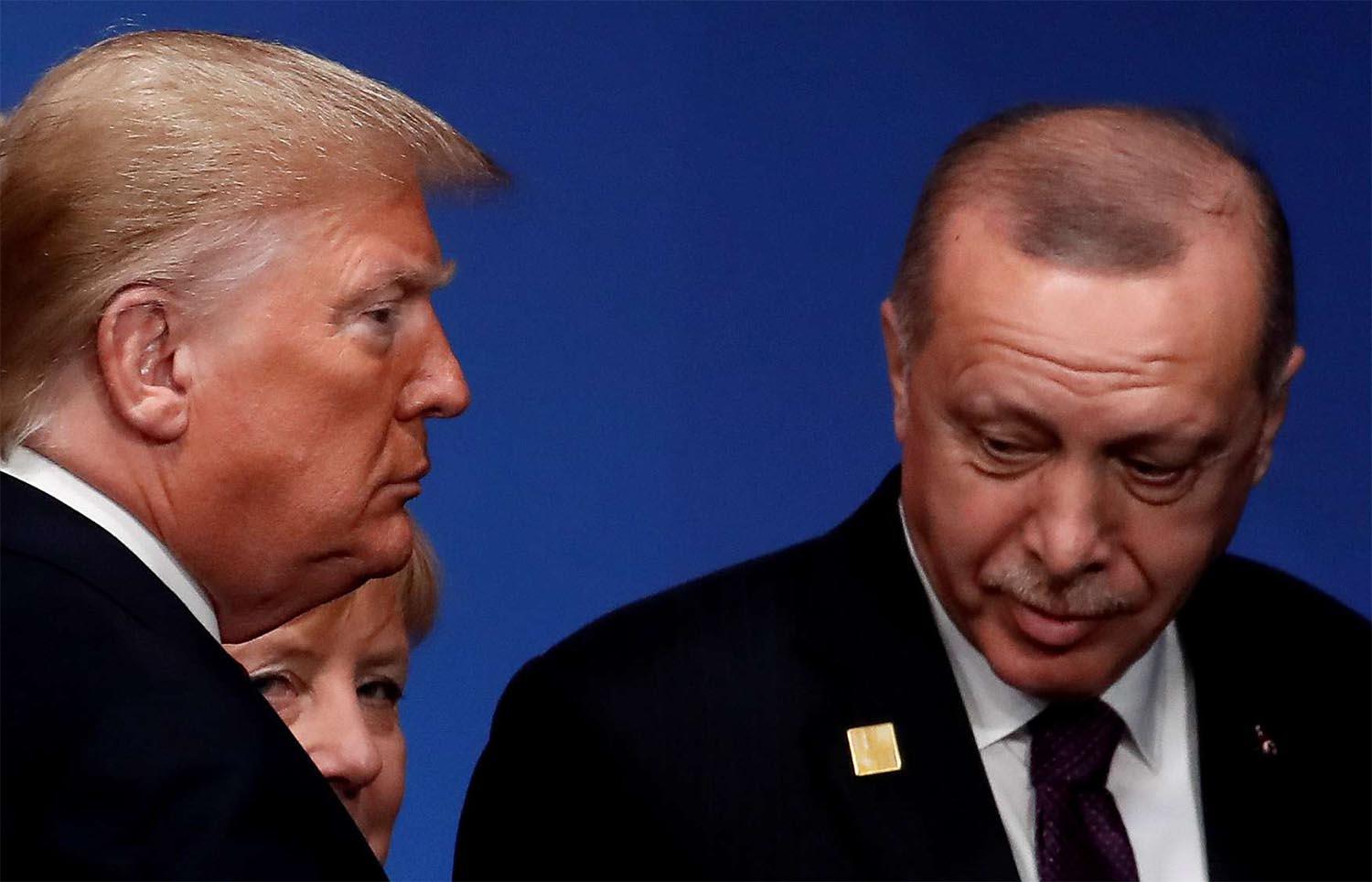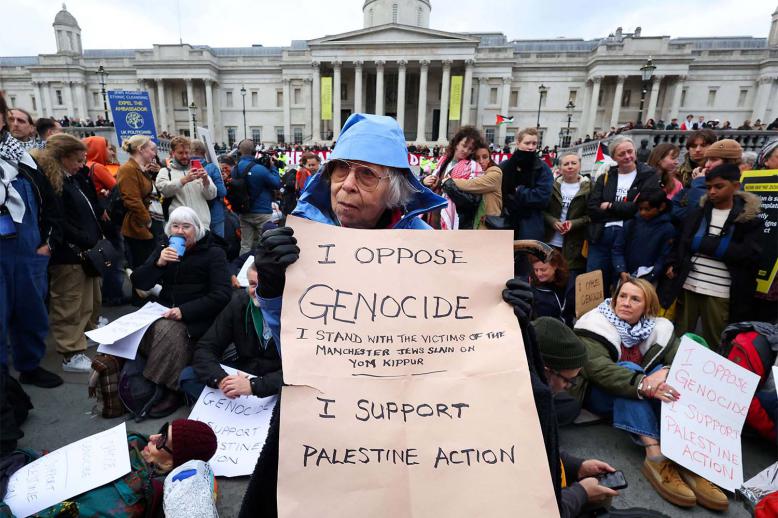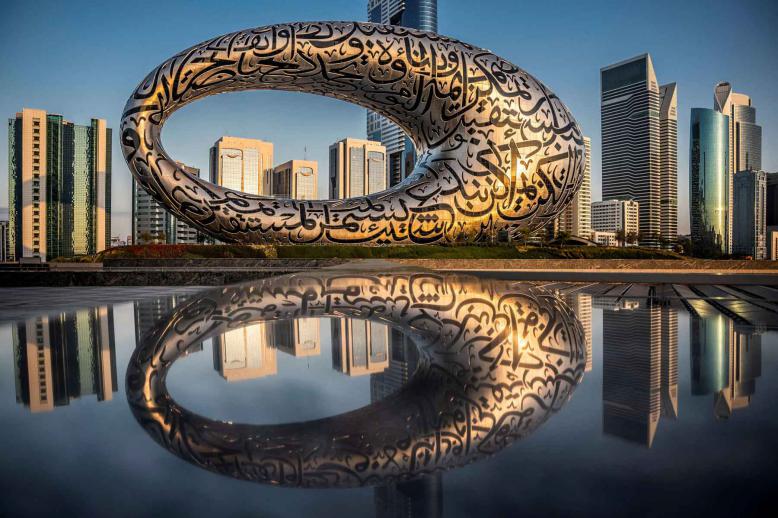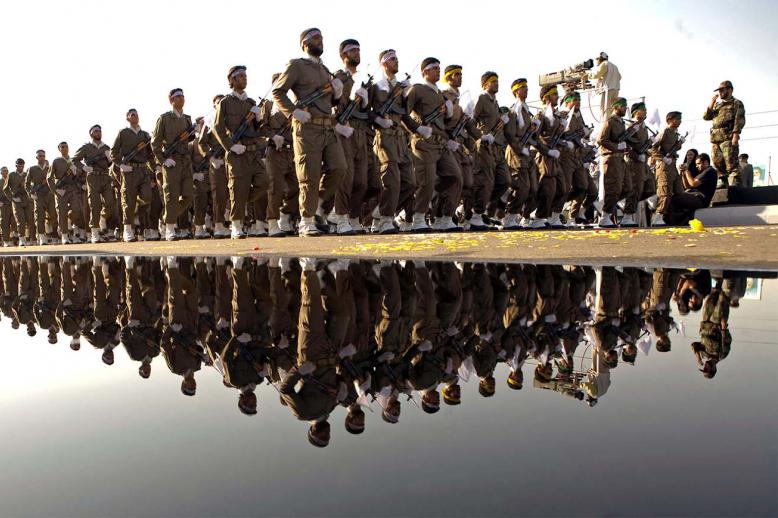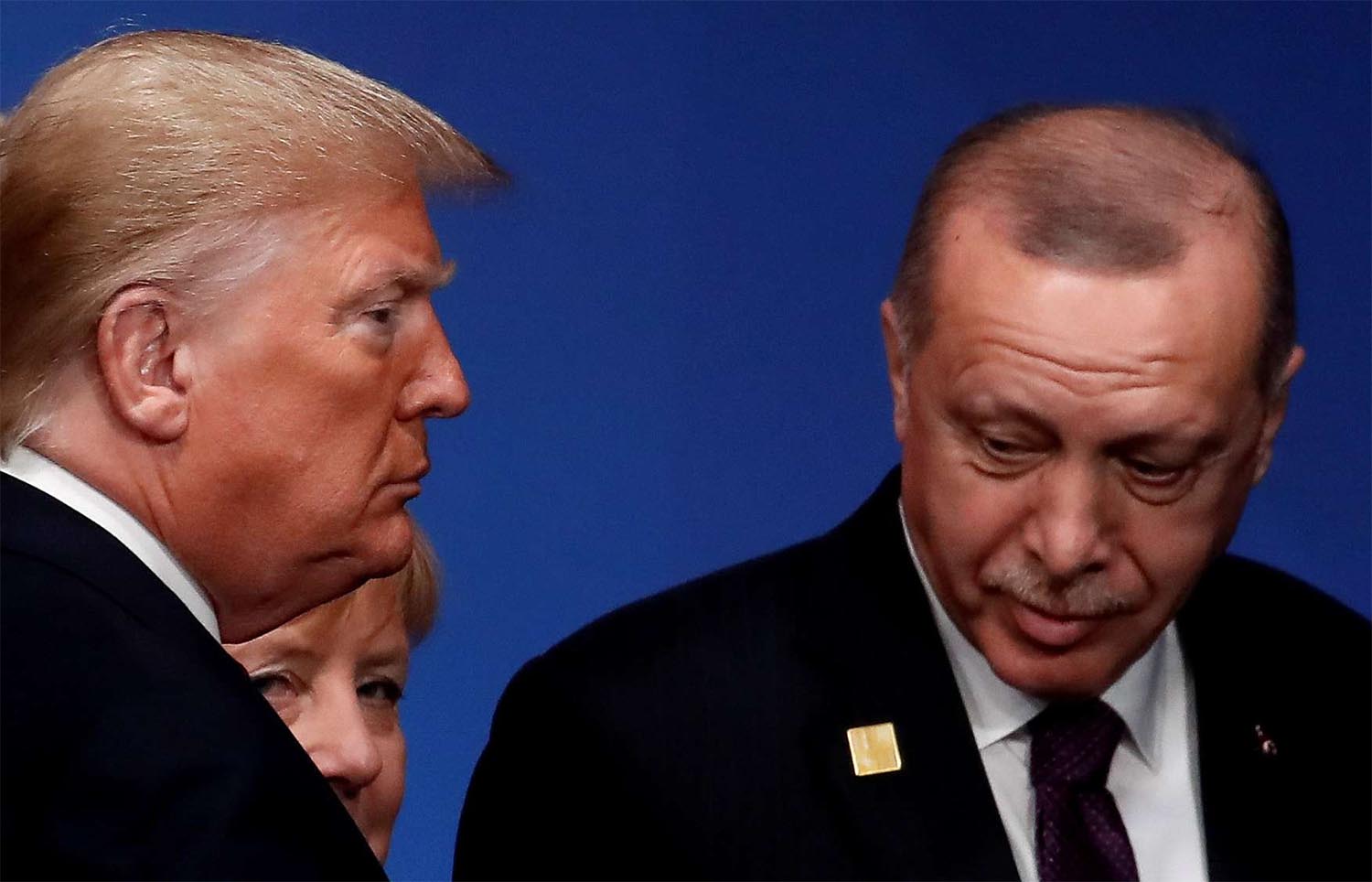Divide, beat and rule: Trump, Erdogan and mass protest
Seven years ago this week, as the anti-government Gezi protests raged across the country, Turkish leader Recep Tayyip Erdogan spoke to thousands of Justice and Development Party (AKP) supporters at Istanbul’s Atatürk airport upon his return from a North Africa trip.
“No power but Allah can stop Turkey's rise,” he said. “These protests, which have turned into vandalism and utter lawlessness, must end immediately...May Allah preserve our fraternity and unity.”
In recent days, Turkey watchers have linked the 2013 Gezi protests to the protests that have raged across the United States since the Memorial Day police killing of George Floyd. Both movements blossomed thanks in part to the aggressive response and tough talk of far-right populist leaders with authoritarian tendencies and a knack for divisiveness.
“A lot of Turkey watchers are instinctively finding parallels,” Lisel Hintz, associate professor of European and Eurasian studies at Johns Hopkins University, told Ahval in a podcast. “We’re seeing the erosion of democracy, I would argue, in the United States. So I think it makes a lot of sense to draw parallels with Turkey.”
In a 2016 article, Hintz examined Erdogan’s response to the Gezi protests and detailed how his government added insult to injury by following up an aggressive police response with rhetorical vilification that included naming the protesters as it saw fit (looters, vandals, terrorists), blaming them for the chaos, and finally framing the situation in a way that strengthened his position.
A crucial part of any government’s effort to blame protesters is an attempt to claim moral righteousness, according to Hintz, author of the book Turkey: Identity Politics Inside Out, which is why, like Erdogan, Trump has turned to religion.
As he delivered his Rose Garden address on Monday, police in Washington D.C. used teargas and flash bangs to clear protesters outside the White House so that, after speaking, Trump could walk to nearby St. John’s Episcopal Church, which had been damaged in the protests, and pose for photos holding the bible.
“This couldn’t be a more crafted way of trying to take the moral high ground,” Hintz said, pointing out how Trump brought along top-ranking officials and urged photographers to include the bible in their shots. “The problem is that it comes off as so unbelievably fake and phoney.”
Mariann Budde, Episcopal Bishop of the U.S. capital, said that the White House had given the church no warning that it would be used as a political prop. “I am outraged,” she told the Washington Post. “Everything [Trump] has said and done is to inflame violence. We need moral leadership, and he’s done everything to divide us.”
Division is a specialty of these two presidents.
There was talk during Gezi that Erdogan, in deploying a brutal response to the protests, had gone too far, that he was losing his grasp on reality. Similarly, pointing to the church photo op, Guardian columnist Richard Wolffe on Tuesday wrote that Trump had reached the mad emperor stage, and that it was terrifying.
I would argue both have remained in control and merely doubled down on their de facto campaign personas of macho patriarchal authoritarianism. Invoking a bygone age, they seek to be fearsome father figures, embracing an aggressive and uncompromising response that often incorporates religion. Theirs is a traditional masculinity that sees righteous hellfire as just.
“You have to do retribution,” Trump advised governors in a Monday phone call, hours before threatening to call in the military and dominate the protesters. “You can’t do the deal where they get one week in jail. These are terrorists. These are terrorists. And they’re looking to do bad things to our country.”
Similarly, Erdogan blamed domestic extremists and terror groups, among others, for the Gezi protests. “Allahu akbar!” his supporters chanted at Atatürk airport, adding: “Let us go, let us crush them!”
Division is not an accidental outcome of this approach; it’s the main objective. The United States has witnessed more than a hundred police attacks on journalists in the past week, starting with the arrest of CNN reporter Omar Jimenez live on-air. During the Gezi protests, and in the years since, Turkish authorities cracked down harshly on reporters, throwing more than a hundred in jail and sparking a sharp increase in self-censorship.
Hintz argued that Erdogan’s apparent commitment to Islam, compared to Trump’s reality TV stardom, penchant for fabrication and persistent accusations of sexual assault, have made the Turkish leader more successful in currying religious backing.
“Erdogan is a pious person,” she said. “Has he engaged in corruption? Yes, absolutely. But Trump is taking that on steroids in terms of...his absolutely morally disgraceful behaviour.”
With a stronger conservative base, Erdogan is likely to be more politically successful in the long-term. What’s more, his country has major divisions and enemies both internal (mainly the outlawed Kurdistan Workers’ Party (PKK), which has waged an insurgency in the southeast for more than three decades, and the Gülenists, which the government blames for the failed 2016 coup) and external (“foreign powers”, the “interest rate lobby”, the “Jewish lobby”, “George Soros”).
“There’s very much a sense of trying to denationalise or delocalise the protesters and say these are not actual grievances, these are coming from outside,” said Hintz.
That the U.S. protests have been more violent than Gezi is undeniable. Hintz puts this down to the fact that Gezi began as an environmental movement, while the U.S. protests have been fuelled from the start by rage, grief, frustration and a sense of deep injustice.
But there are parallels in regards to problematic leadership. Minneapolis police choked the life out of George Floyd, which touched on widespread anger about injustice as well as Trump’s tough law and order message and his racism.
Turkish authorities, with the planned destruction of Gezi Park, sought to choke the life out of Istanbul, symbolising Erdogan’s problematic commitment to urban development and mega projects. The harsh government response to the protests revealed his growing authoritarianism.
Both leaders came to see the protests as a potential existential threat. Yet Trump is more desperate than Erdogan was seven years ago because he faces a presidential election in five months and is trailing his opponent, former vice president Joe Biden, in the latest polls, due in part to his handling of the pandemic and its economic impact. This explains why Trump has blamed the protests on radical Democrats and the left-wing anti-fascist movement Antifa.
“This is not something that was pre-organised by any kind of party, this was a spontaneous spillover of rage and grief,” said Hintz. “But Trump is trying to say this is all orchestrated and this is the machinations of the Democratic Party.”
Erdogan was ultimately able to quell the protests and his AKP won the March 2014 local elections and regained its parliamentary majority the following year, significantly aided by a compliant media. Will Trump’s aggression and polarisation deliver the same result?
Pro-government Yeni Şafak columnist İbrahim Karagül argued this week that the U.S. protests are a sign of decay and that American democracy is starting to disintegrate. The Turkish government has also denounced the police aggression in the United States, yet that did not stop Istanbul police from dispersing a small group of anti-police violence protesters on Tuesday and detaining more than two dozen of them.
“Turkey was de-democratising way before Gezi,” said Hintz. “What’s happened since, and particularly since the coup attempt of 2016, is that basically the public square is off limits for any kind of political dissent... Whatever the march is going to be, whether it’s violence against women or [LGBTI] pride or anything like that, is going to be responded to with police violence.”
David Lepeska, a freelance journalist, has been writing about Turkey for years. He reported from inside Turkey, including Kurdish southeast between 2013 and 2016.
Copyright ©2020 Ahval News


